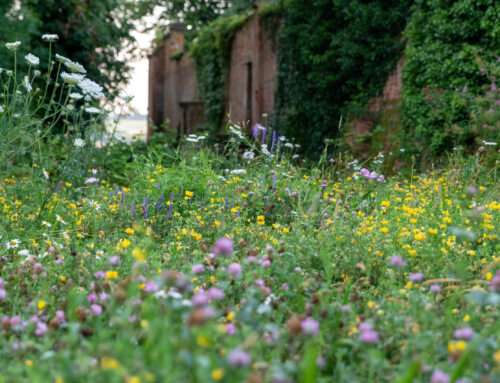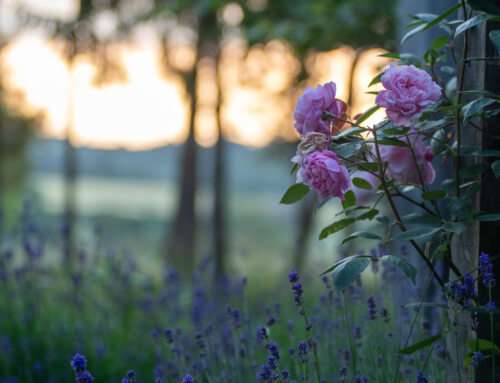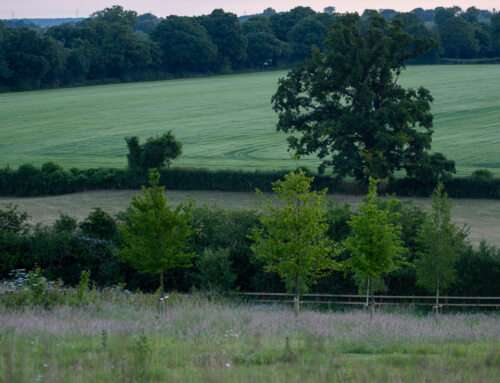Beautiful Gardens for Busy People
By Ruby Simpson
We all share the idealistic notion of sitting in the garden, gazing at the delightfully perfect planting and taking a moment away from the madness of daily life to relax and appreciate the beautiful outdoors. In reality, I find that if I ever have a spare moment to sit down in the garden, I find myself thinking, ‘I should probably mow the lawn’ or ‘I really must do some weeding.’
As a busy parent with a packed schedule and limited time to garden, I stick to time and energy-saving tips. Being a planting design specialist, I must begin with the plants.
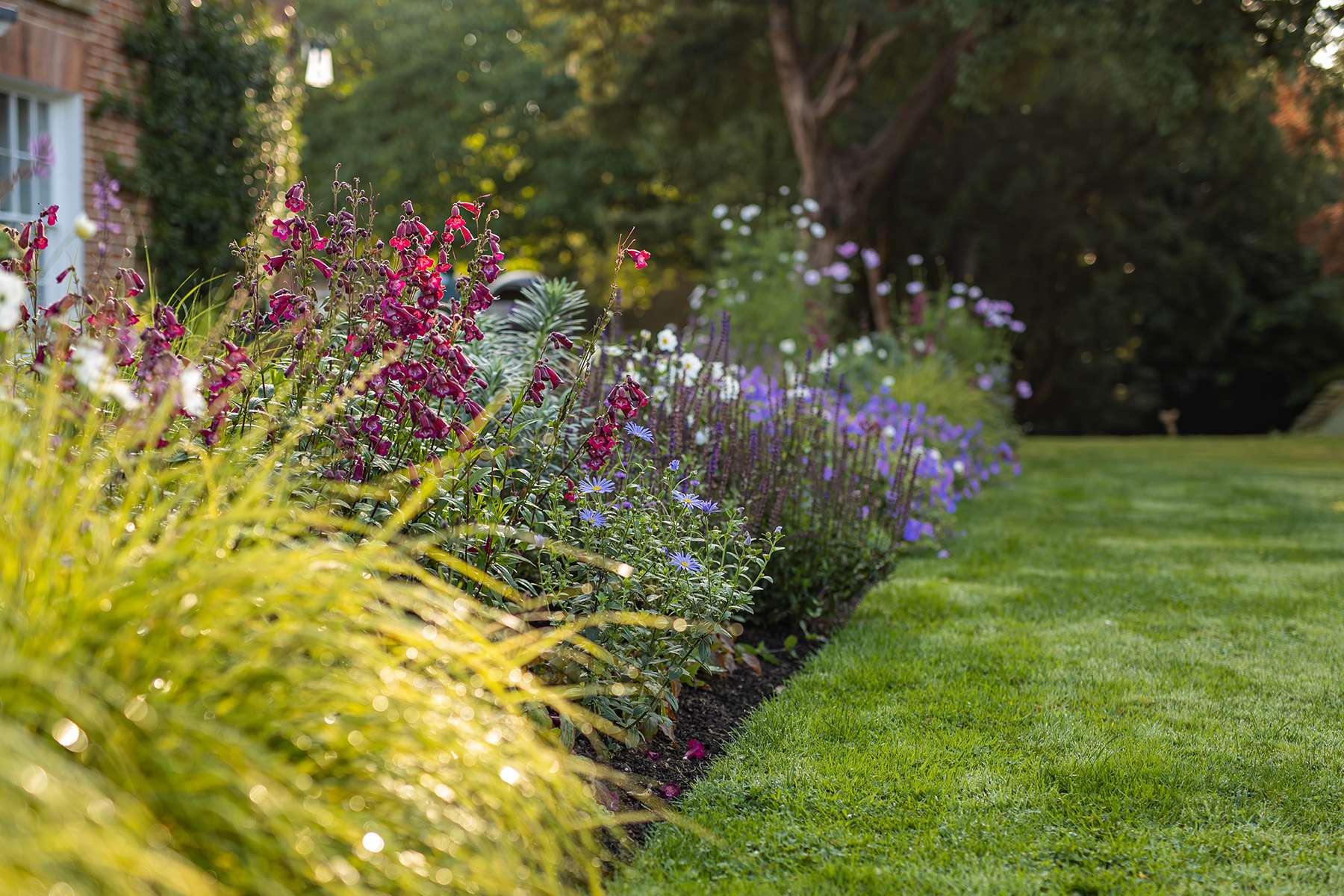
Perennials:
Newly planted gardens do need daily watering in the summer. However, choosing the right plants for your garden makes maintenance easier once they have established and prevents reconfiguration due to planting the wrong plant in the wrong place. Select low maintenance plants that can stand occasional neglect and have long flowering periods. Geranium ‘Rozanne’ is a perfect choice to start with. It displays purple flowers for most of the summer, likes full sun or part shade, is generally unfussy and establishes quickly. Sedum spectabile exhibits pink flowers in late summer and autumn and has a versatile habitat, although does prefer the sun! If you snap a stem off and insert it in the soil somewhere else, it will probably root out and grow into another plant. Crocosmia ‘Lucifer’ is resilient and uncomplicated. It returns every year without fail and spreads to form a good clump. Verbena bonariensis self-seeds, filling unwanted gaps, creating repetition within the garden.
Nepeta ‘Walker’s Low’ is undemanding, with silver-green, scented foliage and purple flowers from May onwards. Hellebores flower all winter and spring with the bonus of evergreen leaves, as well as thriving in a shady spot. Euphorbia ‘Shorty’ makes a lovely, evergreen dome which adds structure to the garden in winter. It has acid-green flowers in the spring and will gradually increase in size each year if you leave it to its own devices. It can be cut back hard where there are new shoots at the base if you wish to control the height. It will also self-seed. Ajuga ‘Chocolate Chip’ has charming evergreen, purple foliage and spreads to form a small mat with mauve flowers in early summer. Aquilegia and Digitalis self-seeds along with various species of ornamental grass. Many ferns reside contently in shade and do not require much attention. Polystichum setiferum is an evergreen fern, so adds a bit of winter structure. Alliums are impressive when planted in big swathes and they come back every year. Their seed heads look majestic in the frost, so avoid pruning once they have finished flowering.
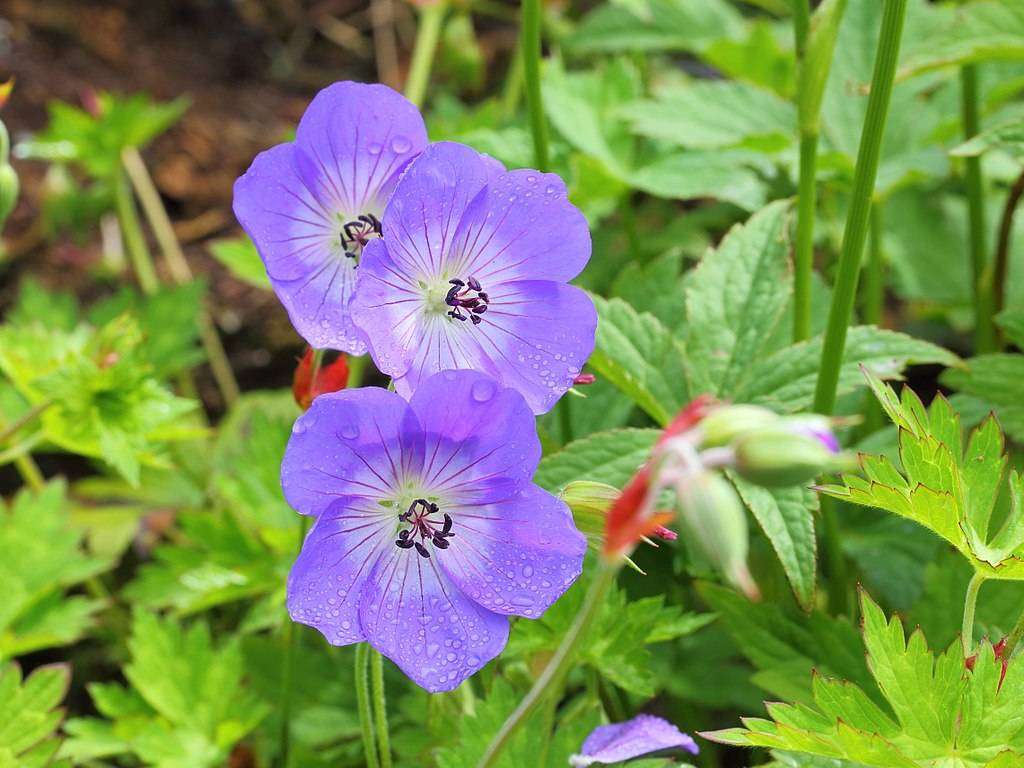
Geranium ‘Rozanne’
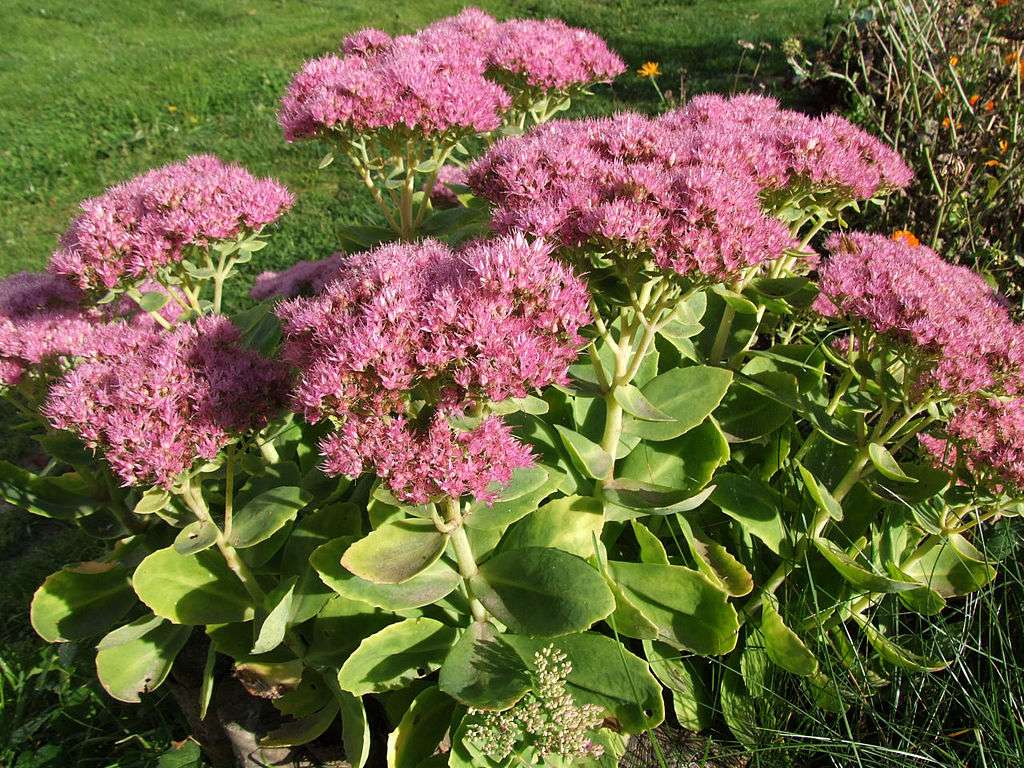
Sedum spectabile
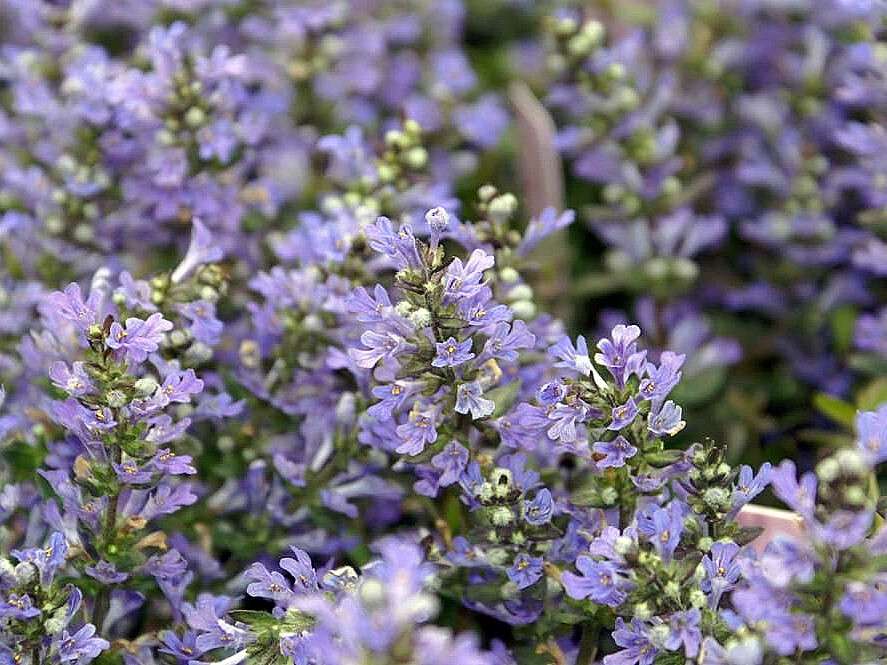
Ajuga ‘Chocolate Chip’
Maintenance is subjective to the owner of the garden. All the plants I have suggested do not require upkeep for most of the year, other than a hard prune in early spring when they are ready to come to life again. This is tried and tested in my own garden. Most of them not only look great in the frost, but also provide winter cover for insects. However, if you are willing, and able to spare the odd hour here and there to cut them back after flowering, you will extend your season of interest by weeks if not months. And when I say ‘cut-back’, I don’t mean painstakingly snipping each individual stem back to a growth point, I mean grasp a handful and cut it in half. This small amount of time spent will reward you right through until the first frosts.
Understanding your soil type is extremely beneficial. The plants I have suggested will flourish in a wide range of soils but if you know you have heavy clay, for example, you need to be more considerate about your plant selection to ensure your garden looks healthy and happy. Our horticultural specialists in North Aston will happily arrange a consultation with you to discuss the specific requirements of your garden. Learn more about our consultations and book yours here: https://www.nicholsonsgb.com/plants/consultations/
Trees and shrubs:
Amelanchier lamarckii, grown as a multi-stem, is great for wildlife. It doesn’t get too large and doesn’t need much attention. It has spring blossom, vibrant autumn colour and is well-loved by birds. Malus ‘Evereste’ is another small tree which has blossom in the spring, crab apples in the autumn and advantageous for wildlife. If you have a sheltered spot in a sunny border, Ceanothus grows extensively, has evergreen foliage and stunning, bright blue flowers in early summer. Callicarpa ‘Profusion’ has green leaves, bronze-green when young, and is covered in tiny, bright violet berries in the autumn! It doesn’t grow too fast – I basically ignore mine apart from when I’m marvelling at the vibrant clusters of berries.
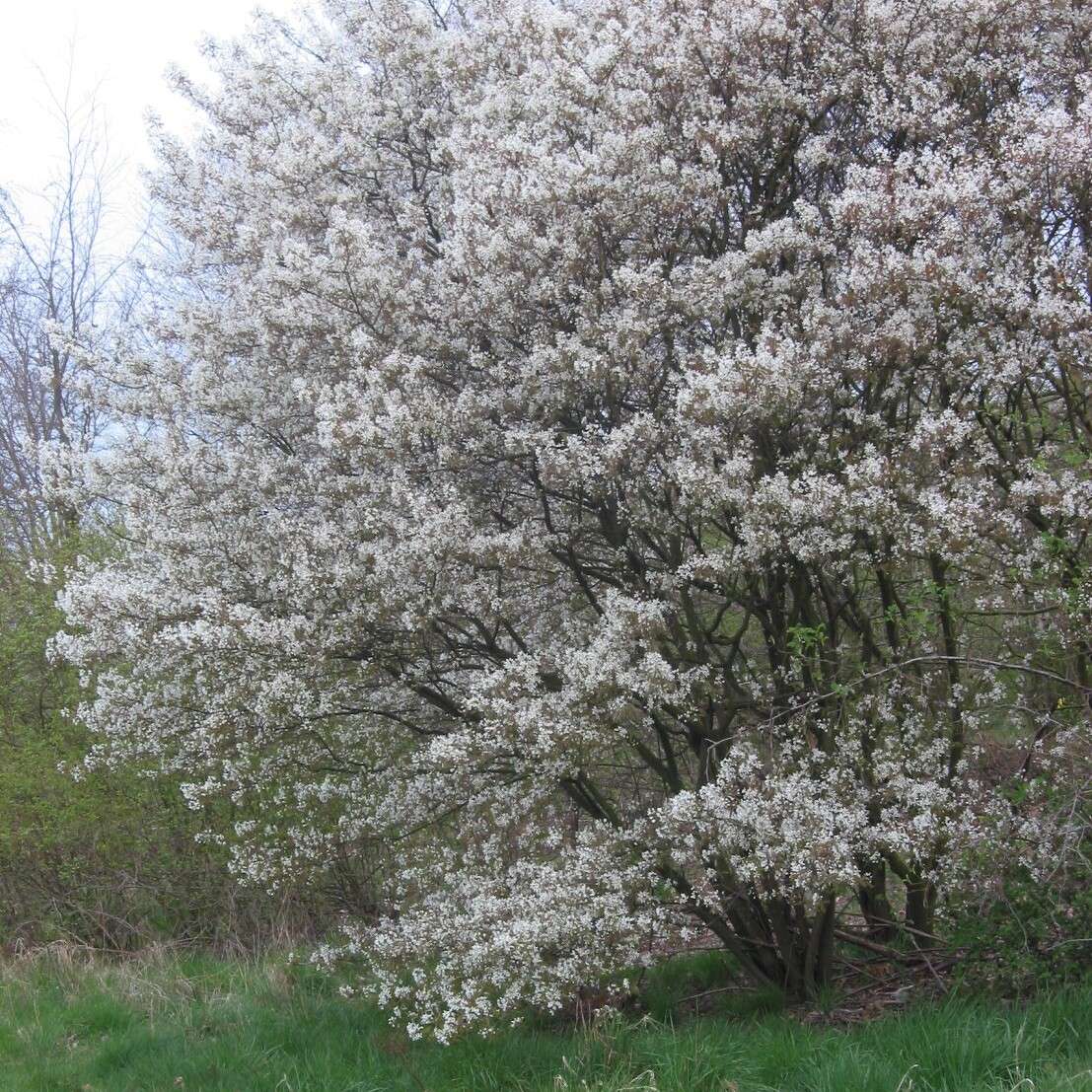
Amelanchier lamarckii
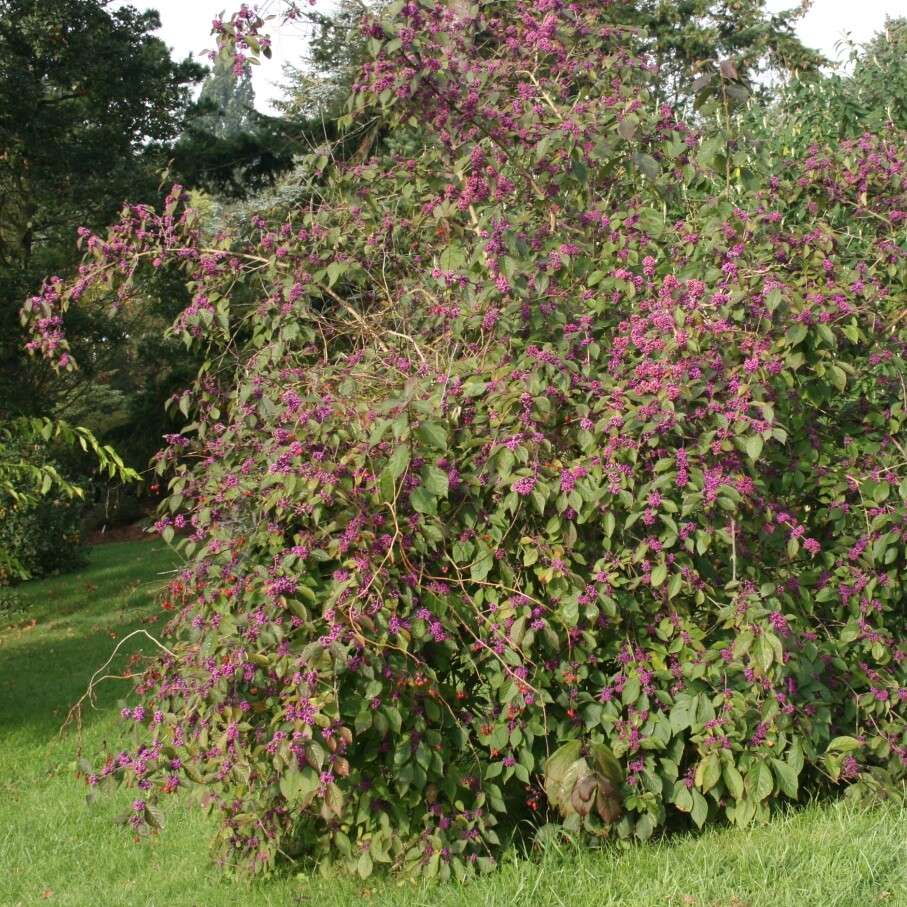
Callicarpa ‘Profusion’
Pots and containers:
Say goodbye to bedding plants! Select an attractive perennial or small shrub instead and reduce the number of pots. They require a substantial amount of watering which is a waste of water and time. Using the same plant (or a limited selection of plants) in all your pots will also look much tidier, more cohesive and will have a better impact. It also reduces maintenance. In addition, perennials and shrubs will last for a few years, rather than just one season. Try planting a trough with Lavandula ‘Munstead’ or a pot or two of Hebe ‘Purple Pixie’. Herbs always work well in pots, but plant them in the ground if you want to reduce maintenance. Osmanthus x burkwoodii looks handsome when clipped into a dome or ball if you have a large container. Evergreens provide excellent structure throughout winter.
Lawn:
Donate a section of your lawn to wildlife and avoid mowing that area. Stop fighting the weeds – mow the ones in the lawn and ignore the ones in the long grass (unless they are invasive). A section of wild grass looks fantastic if you mow a margin around it or path through it. Long grass or wildflower meadows provide a haven for pollinators and insects, not to mention create an enchanting oasis for yourself to enjoy.
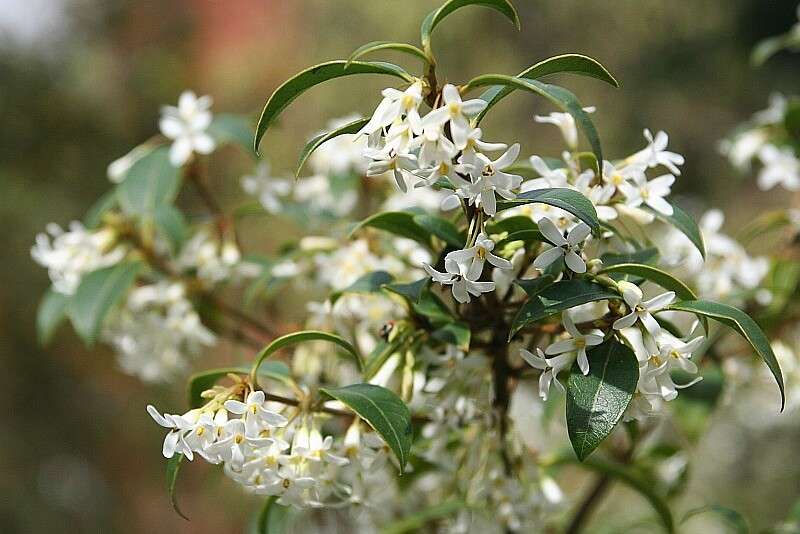
Osmanthus x burkwoodii
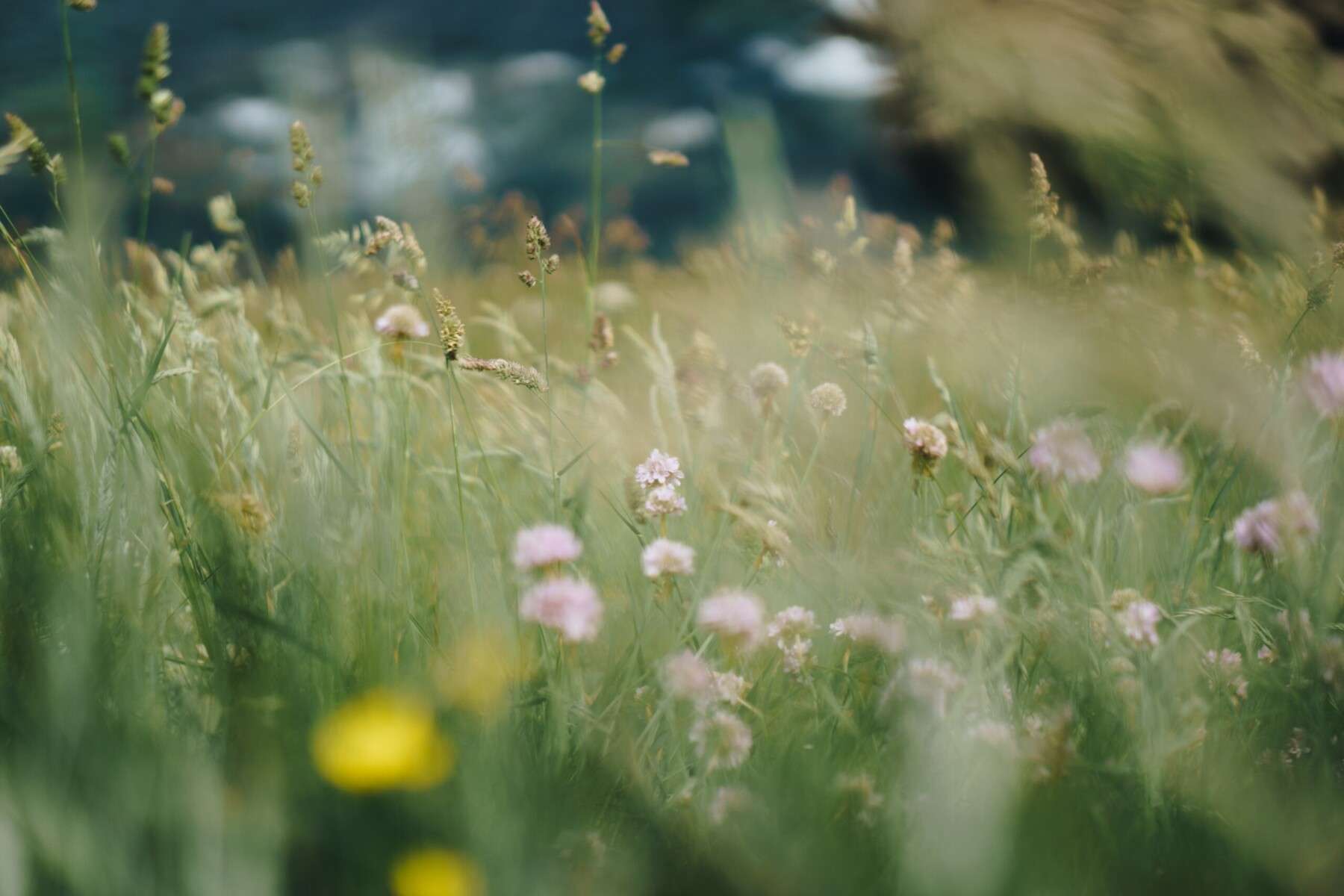
Wildflower meadow
Weeds:
The bane of my life. I have a huge bind weed problem which I just can’t get on top of, so I urge you to be brutal and thorough with invasive perennial weeds! If you completely neglect the weeding, they do sadly take over and other plants will suffer or die. Annual weeds self-seed everywhere and grow very fast but are so easy and satisfying to pull out. Every time I pop into the garden to do something, I pull a few handfuls and compost them using a hot compost method. Mulching is an effective method of controlling perennial weeds. By thoroughly covering the soil with a thick layer of mulch, weeds are deprived of sunlight, preventing their germination. A multi-purpose tool in the garden, mulch also feeds the soil, creating a prosperous growing environment for the plants you want to thrive in your garden.
Watering
Mulching also helps to retain soil moisture – an essential requirement to grow healthy plants. To save time in the warm, summer evenings, install a drip irrigation system. The most efficient methods of watering, these systems target water to the roots of the plant, releasing moisture slowly and eliminating waste. Click here to speak to one of the team who can discuss this with you further.
Garden Maintenance
Alternatively, rather than feeling guilty about the lack of time available to work on your garden, Nicholsons offers regular, weekly maintenance to provide the best possible results. With specialist knowledge and an array of skills from hedge trimming to border maintenance, contact us to discuss how we can support you in your garden maintenance: https://www.nicholsonsgb.com/contact-us/
Time can often be lost when uncertain of the best method or you require the answer to a troubling question. Click here to read our gardening guides or pop into the Plant Centre to obtain specialist advice.
